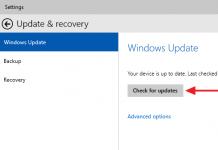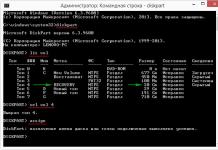NAME
curl - transfer a URLSYNOPSIS
curlDESCRIPTION
curl is a tool to transfer data from or to a server, using one of the supported protocols (HTTP, HTTPS, FTP, FTPS, TFTP, DICT, TELNET, LDAP or FILE). The command is designed to work without user interaction.curl offers a busload of useful tricks like proxy support, user authentication, ftp upload, HTTP post, SSL (https:) connections, cookies, file transfer resume and more. As you will see below, the amount of features will make your head spin!
curl is powered by libcurl for all transfer-related features. See (3) for details.
URL
The URL syntax is protocol dependent. You"ll find a detailed description in RFC 3986.You can specify multiple URLs or parts of URLs by writing part sets within braces as in:
or you can get sequences of alphanumeric series by using as in:
No nesting of the sequences is supported at the moment, but you can use several ones next to each other:
You can specify any amount of URLs on the command line. They will be fetched in a sequential manner in the specified order.
Since curl 7.15.1 you can also specify step counter for the ranges, so that you can get every Nth number or letter:
If you specify URL without protocol:// prefix, curl will attempt to guess what protocol you might want. It will then default to HTTP but try other protocols based on often-used host name prefixes. For example, for host names starting with "ftp." curl will assume you want to speak FTP.
PROGRESS METER
curl normally displays a progress meter during operations, indicating amount of transfered data, transfer speeds and estimated time left etc.However, since curl displays data to the terminal by default, if you invoke curl to do an operation and it is about to write data to the terminal, it disables the progress meter as otherwise it would mess up the output mixing progress meter and response data.
If you want a progress meter for HTTP POST or PUT requests, you need to redirect the response output to a file, using shell redirect (>), -o or similar.
It is not the same case for FTP upload as that operation is not spitting out any response data to the terminal.
If you prefer a progress "bar" instead of the regular meter, -# is your friend.
OPTIONS
-a/--append (FTP) When used in an FTP upload, this will tell curl to append to the target file instead of overwriting it. If the file doesn"t exist, it will be created.If this option is used twice, the second one will disable append mode again.
-A/--user-agent
If this option is set more than once, the last one will be the one that"s used. --anyauth (HTTP) Tells curl to figure out authentication method by itself, and use the most secure one the remote site claims it supports. This is done by first doing a request and checking the response-headers, thus inducing an extra network round-trip. This is used instead of setting a specific authentication method, which you can do with --basic , --digest , --ntlm , and --negotiate .
Note that using --anyauth is not recommended if you do uploads from stdin, since it may require data to be sent twice and then the client must be able to rewind. If the need should arise when uploading from stdin, the upload operation will fail.
If this option is used several times, the following occurrences make no
difference.
-b/--cookie
If no "=" letter is used in the line, it is treated as a filename to use to read previously stored cookie lines from, which should be used in this session if they match. Using this method also activates the "cookie parser" which will make curl record incoming cookies too, which may be handy if you"re using this in combination with the -L/--location option. The file format of the file to read cookies from should be plain HTTP headers or the Netscape/Mozilla cookie file format.
NOTE that the file specified with -b/--cookie is only used as input. No cookies will be stored in the file. To store cookies, use the -c/--cookie-jar option or you could even save the HTTP headers to a file using -D/--dump-header !
If this option is set more than once, the last one will be the one that"s used. -B/--use-ascii Enable ASCII transfer when using FTP or LDAP. For FTP, this can also be enforced by using an URL that ends with ";type=A". This option causes data sent to stdout to be in text mode for win32 systems.
If this option is used twice, the second one will disable ASCII usage. --basic (HTTP) Tells curl to use HTTP Basic authentication. This is the default and this option is usually pointless, unless you use it to override a previously set option that sets a different authentication method (such as --ntlm , --digest and --negotiate ).
If this option is used several times, the following occurrences make no
difference.
--ciphers
(SSL) Specifies which ciphers to use in the connection. The list of ciphers
must be using valid ciphers. Read up on SSL cipher list details on this URL:
http://www.openssl.org/docs/apps/ciphers.html
If this option is used several times, the last one will override the others. --compressed (HTTP) Request a compressed response using one of the algorithms libcurl supports, and return the uncompressed document. If this option is used and the server sends an unsupported encoding, Curl will report an error.
If this option is used several times, each occurrence will toggle it on/off.
--connect-timeout
If this option is used several times, the last one will be used.
-c/--cookie-jar
NOTE If the cookie jar can"t be created or written to, the whole curl operation won"t fail or even report an error clearly. Using -v will get a warning displayed, but that is the only visible feedback you get about this possibly lethal situation.
If this option is used several times, the last specified file name will be
used.
-C/--continue-at
Use "-C -" to tell curl to automatically find out where/how to resume the transfer. It then uses the given output/input files to figure that out.
If this option is used several times, the last one will be used. --create-dirs When used in conjunction with the -o option, curl will create the necessary local directory hierarchy as needed. This option creates the dirs mentioned with the -o option, nothing else. If the -o file name uses no dir or if the dirs it mentions already exist, no dir will be created.
To create remote directories when using FTP, try --ftp-create-dirs . --crlf (FTP) Convert LF to CRLF in upload. Useful for MVS (OS/390).
If this option is used several times, the following occurrences make no difference. -d/--data (HTTP) Sends the specified data in a POST request to the HTTP server, in a way that can emulate as if a user has filled in a HTML form and pressed the submit button. Note that the data is sent exactly as specified with no extra processing (with all newlines cut off). The data is expected to be "url-encoded". This will cause curl to pass the data to the server using the content-type application/x-www-form-urlencoded. Compare to -F/--form . If this option is used more than once on the same command line, the data pieces specified will be merged together with a separating &-letter. Thus, using "-d name=daniel -d skill=lousy" would generate a post chunk that looks like "name=daniel&skill=lousy".
If you start the data with the letter @, the rest should be a file name to read the data from, or - if you want curl to read the data from stdin. The contents of the file must already be url-encoded. Multiple files can also be specified. Posting data from a file named "foobar" would thus be done with --data @foobar".
To post data purely binary, you should instead use the --data-binary option.
-d/--data is the same as --data-ascii .
If this option is used several times, the ones following the first will append data. --data-ascii (HTTP) This is an alias for the -d/--data option.
If this option is used several times, the ones following the first will append data. --data-binary (HTTP) This posts data in a similar manner as --data-ascii does, although when using this option the entire context of the posted data is kept as-is. If you want to post a binary file without the strip-newlines feature of the --data-ascii option, this is for you.
If this option is used several times, the ones following the first will append data. --digest (HTTP) Enables HTTP Digest authentication. This is a authentication that prevents the password from being sent over the wire in clear text. Use this in combination with the normal -u/--user option to set user name and password. See also --ntlm , --negotiate and --anyauth for related options.
If this option is used several times, the following occurrences make no difference. --disable-eprt (FTP) Tell curl to disable the use of the EPRT and LPRT commands when doing active FTP transfers. Curl will normally always first attempt to use EPRT, then LPRT before using PORT, but with this option, it will use PORT right away. EPRT and LPRT are extensions to the original FTP protocol, may not work on all servers but enable more functionality in a better way than the traditional PORT command.
If this option is used several times, each occurrence will toggle this on/off. --disable-epsv (FTP) Tell curl to disable the use of the EPSV command when doing passive FTP transfers. Curl will normally always first attempt to use EPSV before PASV, but with this option, it will not try using EPSV.
If this option is used several times, each occurrence will toggle this on/off.
-D/--dump-header
This option is handy to use when you want to store the headers that a HTTP site sends to you. Cookies from the headers could then be read in a second curl invoke by using the -b/--cookie option! The -c/--cookie-jar option is however a better way to store cookies.
When used on FTP, the ftp server response lines are considered being "headers" and thus are saved there.
If this option is used several times, the last one will be used.
-e/--referer
If this option is used several times, the last one will be used.
--engine
If this option is used several times, each occurrence will toggle this on/off.
--egd-file
If this option is used several times, the last one will be used.
--cert-type
If this option is used several times, the last one will be used.
--cacert
curl recognizes the environment variable named "CURL_CA_BUNDLE" if that is set, and uses the given path as a path to a CA cert bundle. This option overrides that variable.
The windows version of curl will automatically look for a CA certs file named "curl-ca-bundle.crt", either in the same directory as curl.exe, or in the Current Working Directory, or in any folder along your PATH.
If this option is used several times, the last one will be used.
--capath
If this option is used several times, the last one will be used. -f/--fail (HTTP) Fail silently (no output at all) on server errors. This is mostly done like this to better enable scripts etc to better deal with failed attempts. In normal cases when a HTTP server fails to deliver a document, it returns an HTML document stating so (which often also describes why and more). This flag will prevent curl from outputting that and return error 22.
If this option is used twice, the second will again disable silent failure. --ftp-account (FTP) When an FTP server asks for "account data" after user name and password has been provided, this data is sent off using the ACCT command. (Added in 7.13.0)
If this option is used twice, the second will override the previous use. --ftp-create-dirs (FTP) When an FTP URL/operation uses a path that doesn"t currently exist on the server, the standard behavior of curl is to fail. Using this option, curl will instead attempt to create missing directories.
If this option is used twice, the second will again disable directory creation. --ftp-method (FTP) Control what method curl should use to reach a file on a FTP(S) server. The method argument should be one of the following alternatives: multicwd curl does a single CWD operation for each path part in the given URL. For deep hierarchies this means very many commands. This is how RFC1738 says it should be done. This is the default but the slowest behavior. nocwd curl does no CWD at all. curl will do SIZE, RETR, STOR etc and give a full path to the server for all these commands. This is the fastest behavior. singlecwd curl does one CWD with the full target directory and then operates on the file "normally" (like in the multicwd case). This is somewhat more standards compliant than "nocwd" but without the full penalty of "multicwd". --ftp-pasv (FTP) Use PASV when transferring. PASV is the internal default behavior, but using this option can be used to override a previous --ftp-port option. (Added in 7.11.0)
If this option is used several times, the following occurrences make no difference.
Ftp-alternative-to-user
This option has no effect if PORT, EPRT or EPSV is used instead of PASV.
If this option is used twice, the second will again use the server"s suggested address. --ftp-ssl (FTP) Try to use SSL/TLS for the FTP connection. Reverts to a non-secure connection if the server doesn"t support SSL/TLS. (Added in 7.11.0)
If this option is used twice, the second will again disable this. --ftp-ssl-reqd (FTP) Require SSL/TLS for the FTP connection. Terminates the connection if the server doesn"t support SSL/TLS. (Added in 7.15.5)
If this option is used twice, the second will again disable this.
-F/--form
Example, to send your password file to the server, where "password" is the name of the form-field to which /etc/passwd will be the input:
To read the file"s content from stdin instead of a file, use - where the file name should"ve been. This goes for both @ and < constructs.
You can also tell curl what Content-Type to use by using "type=", in a manner similar to:
curl -F "[email protected];type=text/html" url.com
curl -F "name=daniel;type=text/foo" url.com
You can also explicitly change the name field of an file upload part by setting filename=, like this:
curl -F "file=@localfile;filename=nameinpost" url.com
See further examples and details in the MANUAL.
This option can be used multiple times.
--form-string
If used in combination with -I, the POST data will instead be appended to the URL with a HEAD request.
If this option is used several times, the following occurrences make no
difference.
-h/--help
Usage help.
-H/--header
curl will make sure that each header you add/replace get sent with the proper end of line marker, you should thus not add that as a part of the header content: do not add newlines or carriage returns they will only mess things up for you.
See also the -A/--user-agent and -e/--referer options.
This option can be used multiple times to add/replace/remove multiple headers. --ignore-content-length (HTTP) Ignore the Content-Length header. This is particularly useful for servers running Apache 1.x, which will report incorrect Content-Length for files larger than 2 gigabytes. -i/--include (HTTP) Include the HTTP-header in the output. The HTTP-header includes things like server-name, date of the document, HTTP-version and more...
If this option is used twice, the second will again disable header include.
--interface
If this option is used several times, the last one will be used. -I/--head (HTTP/FTP/FILE) Fetch the HTTP-header only! HTTP-servers feature the command HEAD which this uses to get nothing but the header of a document. When used on a FTP or FILE file, curl displays the file size and last modification time only.
If this option is used twice, the second will again disable header only. -j/--junk-session-cookies (HTTP) When curl is told to read cookies from a given file, this option will make it discard all "session cookies". This will basically have the same effect as if a new session is started. Typical browsers always discard session cookies when they"re closed down.
If this option is used several times, each occurrence will toggle this on/off. -k/--insecure (SSL) This option explicitly allows curl to perform "insecure" SSL connections and transfers. All SSL connections are attempted to be made secure by using the CA certificate bundle installed by default. This makes all connections considered "insecure" to fail unless -k/--insecure is used.
If this option is used twice, the second time will again disable it.
--key
If this option is used several times, the last one will be used.
--key-type
If this option is used several times, the last one will be used.
--krb4
This option requires that the library was built with kerberos4 support. This is not very common. Use -V/--version to see if your curl supports it.
If this option is used several times, the last one will be used.
-K/--config
Specify the filename as "-" to make curl read the file from stdin.
Note that to be able to specify a URL in the config file, you need to specify it using the --url option, and not by simply writing the URL on its own line. So, it could look similar to this:
This option can be used multiple times.
When curl is invoked, it always (unless -q is used) checks for a default config file and uses it if found. The default config file is checked for in the following places in this order:
1) curl tries to find the "home dir": It first checks for the CURL_HOME and then the HOME environment variables. Failing that, it uses getpwuid() on unix-like systems (which returns the home dir given the current user in your system). On Windows, it then checks for the APPDATA variable, or as a last resort the "%USERPROFILE%Application Data".
2) On windows, if there is no _curlrc file in the home dir, it checks for one
in the same dir the executable curl is placed. On unix-like systems, it will
simply try to load .curlrc from the determined home dir.
--limit-rate
The given speed is measured in bytes/second, unless a suffix is appended. Appending "k" or "K" will count the number as kilobytes, "m" or M" makes it megabytes while "g" or "G" makes it gigabytes. Examples: 200K, 3m and 1G.
If you are also using the -Y/--speed-limit option, that option will take precedence and might cripple the rate-limiting slightly, to help keeping the speed-limit logic working.
If this option is used several times, the last one will be used. -l/--list-only (FTP) When listing an FTP directory, this switch forces a name-only view. Especially useful if you want to machine-parse the contents of an FTP directory since the normal directory view doesn"t use a standard look or format.
This option causes an FTP NLST command to be sent. Some FTP servers list only files in their response to NLST; they do not include subdirectories and symbolic links.
If this option is used twice, the second will again disable list only.
--local-port
If this option is used twice, the second will again disable location following. --location-trusted (HTTP/HTTPS) Like -L/--location , but will allow sending the name + password to all hosts that the site may redirect to. This may or may not introduce a security breach if the site redirects you do a site to which you"ll send your authentication info (which is plaintext in the case of HTTP Basic authentication).
If this option is used twice, the second will again disable location following.
--max-filesize
NOTE: The file size is not always known prior to download, and for such files
this option has no effect even if the file transfer ends up being larger than
this given limit. This concerns both FTP and HTTP transfers.
-m/--max-time
If this option is used several times, the last one will be used. -M/--manual Manual. Display the huge help text. -n/--netrc Makes curl scan the .netrc file in the user"s home directory for login name and password. This is typically used for ftp on unix. If used with http, curl will enable user authentication. See (4) or (1) for details on the file format. Curl will not complain if that file hasn"t the right permissions (it should not be world nor group readable). The environment variable "HOME" is used to find the home directory.
A quick and very simple example of how to setup a .netrc to allow curl to ftp to the machine host.domain.com with user name "myself" and password "secret" should look similar to:
machine host.domain.com login myself password secret
If this option is used twice, the second will again disable netrc usage. --netrc-optional Very similar to --netrc , but this option makes the .netrc usage optional and not mandatory as the --netrc does. --negotiate (HTTP) Enables GSS-Negotiate authentication. The GSS-Negotiate method was designed by Microsoft and is used in their web applications. It is primarily meant as a support for Kerberos5 authentication but may be also used along with another authentication methods. For more information see IETF draft draft-brezak-spnego-http-04.txt.
This option requires that the library was built with GSSAPI support. This is not very common. Use -V/--version to see if your version supports GSS-Negotiate.
When using this option, you must also provide a fake -u/--user option to activate the authentication code properly. Sending a "-u:" is enough as the user name and password from the -u option aren"t actually used.
If this option is used several times, the following occurrences make no difference. -N/--no-buffer Disables the buffering of the output stream. In normal work situations, curl will use a standard buffered output stream that will have the effect that it will output the data in chunks, not necessarily exactly when the data arrives. Using this option will disable that buffering.
If this option is used twice, the second will again switch on buffering. --ntlm (HTTP) Enables NTLM authentication. The NTLM authentication method was designed by Microsoft and is used by IIS web servers. It is a proprietary protocol, reversed engineered by clever people and implemented in curl based on their efforts. This kind of behavior should not be endorsed, you should encourage everyone who uses NTLM to switch to a public and documented authentication method instead. Such as Digest.
If you want to enable NTLM for your proxy authentication, then use --proxy-ntlm .
This option requires that the library was built with SSL support. Use -V/--version to see if your curl supports NTLM.
If this option is used several times, the following occurrences make no
difference.
-o/--output
You may use this option as many times as you have number of URLs.
See also the --create-dirs option to create the local directories dynamically. -O/--remote-name Write output to a local file named like the remote file we get. (Only the file part of the remote file is used, the path is cut off.)
The remote file name to use for saving is extracted from the given URL, nothing else.
You may use this option as many times as you have number of URLs.
--pass
If this option is used several times, the last one will be used. --proxy-anyauth Tells curl to pick a suitable authentication method when communicating with the given proxy. This will cause an extra request/response round-trip. (Added in 7.13.2)
If this option is used twice, the second will again disable the proxy use-any authentication. --proxy-basic Tells curl to use HTTP Basic authentication when communicating with the given proxy. Use --basic for enabling HTTP Basic with a remote host. Basic is the default authentication method curl uses with proxies.
If this option is used twice, the second will again disable proxy HTTP Basic authentication. --proxy-digest Tells curl to use HTTP Digest authentication when communicating with the given proxy. Use --digest for enabling HTTP Digest with a remote host.
If this option is used twice, the second will again disable proxy HTTP Digest. --proxy-ntlm Tells curl to use HTTP NTLM authentication when communicating with the given proxy. Use --ntlm for enabling NTLM with a remote host.
If this option is used twice, the second will again disable proxy HTTP NTLM. -p/--proxytunnel When an HTTP proxy is used (-x/--proxy ), this option will cause non-HTTP protocols to attempt to tunnel through the proxy instead of merely using it to do HTTP-like operations. The tunnel approach is made with the HTTP proxy CONNECT request and requires that the proxy allows direct connect to the remote port number curl wants to tunnel through to.
If this option is used twice, the second will again disable proxy tunnel. -P/--ftp-port
(FTP) Reverses the initiator/listener roles when connecting with ftp. This switch makes Curl use the PORT command instead of PASV. In practice, PORT tells the server to connect to the client"s specified address and port, while PASV asks the server for an ip address and port to connect to. should be one of: interface i.e "eth0" to specify which interface"s IP address you want to use (Unix only) IP address i.e "192.168.10.1" to specify exact IP number host name i.e "my.host.domain" to specify machine - make curl pick the same IP address that is already used for the control connectionIf this option is used several times, the last one will be used. Disable the
use of PORT with --ftp-pasv
. Disable the attempt to use the EPRT command
instead of PORT by using --disable-eprt
. EPRT is really PORT++.
-q
If used as the first parameter on the command line, the curlrc
config
file will not be read and used. See the -K/--config
for details on the
default config file search path.
-Q/--quote
This option can be used multiple times.
--random-file
(*) = NOTE that this will cause the server to reply with a multipart response!
You should also be aware that many HTTP/1.1 servers do not have this feature enabled, so that when you attempt to get a range, you"ll instead get the whole document.
FTP range downloads only support the simple syntax "start-stop" (optionally with one of the numbers omitted). It depends on the non-RFC command SIZE.
If this option is used several times, the last one will be used. -R/--remote-time When used, this will make libcurl attempt to figure out the timestamp of the remote file, and if that is available make the local file get that same timestamp.
If this option is used twice, the second time disables this again.
--retry
When curl is about to retry a transfer, it will first wait one second and then for all forthcoming retries it will double the waiting time until it reaches 10 minutes which then will be the delay between the rest of the retries. By using --retry-delay you disable this exponential backoff algorithm. See also --retry-max-time to limit the total time allowed for retries. (Added in 7.12.3)
If this option is used multiple times, the last occurrence decide the amount.
--retry-delay
If this option is used multiple times, the last occurrence decide the amount.
--retry-max-time
If this option is used multiple times, the last occurrence decide the amount. -s/--silent Silent mode. Don"t show progress meter or error messages. Makes Curl mute.
If this option is used twice, the second will again disable silent mode. -S/--show-error When used with -s it makes curl show error message if it fails.
If this option is used twice, the second will again disable show error.
--socks4
-x/--proxy
If this option is used several times, the last one will be used.
--socks5
This option overrides any previous use of -x/--proxy , as they are mutually exclusive.
If this option is used several times, the last one will be used. (This option
was previously wrongly documented and used as --socks without the number
appended.)
--stderr
If this option is used several times, the last one will be used. --tcp-nodelay Turn on the TCP_NODELAY option. See the (3) man page for details about this option. (Added in 7.11.2)
If this option is used several times, each occurrence toggles this on/off.
-t/--telnet-option
TTYPE=
XDISPLOC=
NEW_ENV=
Use the file name "-" (a single dash) to use stdin instead of a given file.
You can specify one -T for each URL on the command line. Each -T + URL pair specifies what to upload and to where. curl also supports "globbing" of the -T argument, meaning that you can upload multiple files to a single URL by using the same URL globbing style supported in the URL, like this:
FILES
~/.curlrc Default config file, see -K/--config for details.ENVIRONMENT
http_proxyEXIT CODES
There exists a bunch of different error codes and their corresponding error messages that may appear during bad conditions. At the time of this writing, the exit codes are: 1 Unsupported protocol. This build of curl has no support for this protocol. 2 Failed to initialize. 3 URL malformat. The syntax was not correct. 4 URL user malformatted. The user-part of the URL syntax was not correct. 5 Couldn"t resolve proxy. The given proxy host could not be resolved. 6 Couldn"t resolve host. The given remote host was not resolved. 7 Failed to connect to host. 8 FTP weird server reply. The server sent data curl couldn"t parse. 9 FTP access denied. The server denied login or denied access to the particular resource or directory you wanted to reach. Most often you tried to change to a directory that doesn"t exist on the server. 10 FTP user/password incorrect. Either one or both were not accepted by the server. 11 FTP weird PASS reply. Curl couldn"t parse the reply sent to the PASS request. 12 FTP weird USER reply. Curl couldn"t parse the reply sent to the USER request. 13 FTP weird PASV reply, Curl couldn"t parse the reply sent to the PASV request. 14 FTP weird 227 format. Curl couldn"t parse the 227-line the server sent. 15 FTP can"t get host. Couldn"t resolve the host IP we got in the 227-line. 16 FTP can"t reconnect. Couldn"t connect to the host we got in the 227-line. 17 FTP couldn"t set binary. Couldn"t change transfer method to binary. 18 Partial file. Only a part of the file was transferred. 19 FTP couldn"t download/access the given file, the RETR (or similar) command failed. 20 FTP write error. The transfer was reported bad by the server. 21 FTP quote error. A quote command returned error from the server. 22 HTTP page not retrieved. The requested url was not found or returned another error with the HTTP error code being 400 or above. This return code only appears if -f/--fail is used. 23 Write error. Curl couldn"t write data to a local filesystem or similar. 24 Malformed user. User name badly specified. 25 FTP couldn"t STOR file. The server denied the STOR operation, used for FTP uploading. 26 Read error. Various reading problems. 27 Out of memory. A memory allocation request failed. 28 Operation timeout. The specified time-out period was reached according to the conditions. 29 FTP couldn"t set ASCII. The server returned an unknown reply. 30 FTP PORT failed. The PORT command failed. Not all FTP servers support the PORT command, try doing a transfer using PASV instead! 31 FTP couldn"t use REST. The REST command failed. This command is used for resumed FTP transfers. 32 FTP couldn"t use SIZE. The SIZE command failed. The command is an extension to the original FTP spec RFC 959. 33 HTTP range error. The range "command" didn"t work. 34 HTTP post error. Internal post-request generation error. 35 SSL connect error. The SSL handshaking failed. 36 FTP bad download resume. Couldn"t continue an earlier aborted download. 37 FILE couldn"t read file. Failed to open the file. Permissions? 38 LDAP cannot bind. LDAP bind operation failed. 39 LDAP search failed. 40 Library not found. The LDAP library was not found. 41 Function not found. A required LDAP function was not found. 42 Aborted by callback. An application told curl to abort the operation. 43 Internal error. A function was called with a bad parameter. 44 Internal error. A function was called in a bad order. 45 Interface error. A specified outgoing interface could not be used. 46 Bad password entered. An error was signaled when the password was entered. 47 Too many redirects. When following redirects, curl hit the maximum amount. 48 Unknown TELNET option specified. 49 Malformed telnet option. 51 The remote peer"s SSL certificate wasn"t ok 52 The server didn"t reply anything, which here is considered an error. 53 SSL crypto engine not found 54 Cannot set SSL crypto engine as default 55 Failed sending network data 56 Failure in receiving network data 57 Share is in use (internal error) 58 Problem with the local certificate 59 Couldn"t use specified SSL cipher 60 Problem with the CA cert (path? permission?) 61 Unrecognized transfer encoding 62 Invalid LDAP URL 63 Maximum file size exceeded 64 Requested FTP SSL level failed 65 Sending the data requires a rewind that failed 66 Failed to initialise SSL Engine 67 User, password or similar was not accepted and curl failed to login 68 File not found on TFTP server 69 Permission problem on TFTP server 70 Out of disk space on TFTP server 71 Illegal TFTP operation 72 Unknown TFTP transfer ID 73 File already exists (TFTP) 74 No such user (TFTP) 75 Character conversion failed 76 Character conversion functions required XX There will appear more error codes here in future releases. The existing ones are meant to never change.Представляем вашему вниманию новый курс от команды The Codeby - "Тестирование Веб-Приложений на проникновение с нуля". Общая теория, подготовка рабочего окружения, пассивный фаззинг и фингерпринт, Активный фаззинг, Уязвимости, Пост-эксплуатация, Инструментальные средства, Social Engeneering и многое другое.
Источник:
cURL — это пакет программного обеспечения, состоящий из утилиты командной строки и библиотеки для передачи данных с использованием синтаксиса URL.
cURL поддерижвает множество протоколов, среди них DICT, FILE, FTP, FTPS, Gopher, HTTP, HTTPS, IMAP, IMAPS, LDAP, LDAPS, POP3, POP3S, RTMP, RTSP, SCP, SFTP, SMTP, SMTPS, Telnet и TFTP.
Загрузить отдельный файл
Следующая команда получит содержимое URL и отобразит его в стандартном выводе (т. е. в вашем терминале).
Curl https://mi-al.ru/ > mi-al.htm % Total % Received % Xferd Average Speed Time Time Time Current Dload Upload Total Spent Left Speed 100 14378 0 14378 0 0 5387 0 --:--:-- 0:00:02 --:--:-- 5387
Сохранение вывода cURL в файл
- -o (o нижнего регистра) результат будет сохранён в файле, заданном в командной строке
- -O (O верхнего регистра) имя файла будет взято из URL и будет использовано для сохранения полученных данных.
Теперь будет сохранена страница gettext.html в файле с названием ‘mygettext.html’. Когда curl запущена с опцией -o, она отображает шкалу прогресса загрузки следующим образом.
% Total % Received % Xferd Average Speed Time Time Time Current Dload Upload Total Spent Left Speed 66 1215k 66 805k 0 0 33060 0 0:00:37 0:00:24 0:00:13 45900 100 1215k 100 1215k 0 0 39474 0 0:00:31 0:00:31 --:--:-- 68987
Когда вы используете curl -O (O верхнего регистра), она сама по себе сохранит содержимое в файл под названием ‘gettext.html’ на локальной машине.
$ curl -O http://www.gnu.org/software/gettext/manual/gettext.html
Примечание: Когда curl должна писать данные в терминал, она отключает шкалу прогресса, чтобы не было путаницы в напечатанных данных. Мы можем исользовать ‘>’|’-o’|’-O’ опции для передачи результатов в файл.
Выборка нескольких файлов одновременно
Мы можем загрузить несколько файлов за один раз, задав все URL в командной строке.
Curl -O URL1 -O URL2
Команда ниже загрузит оба index.html и gettext.html и сохранит их с теми же именами в текущей директории.
Curl -O http://www.gnu.org/software/gettext/manual/html_node/index.html -O http://www.gnu.org/software/gettext/manual/gettext.html
Пожалуйста, обратите внимание, когда мы загружаем несколько файлов с одного сервера как показано выше, curl попытается повторно использовать соединение.
Следуем за HTTP Location в заголовках с опцией -L
По умолчанию, CURL не следует за HTTP Location в заголовках (редиректы). Когда запрошенная веб-страница перемещена в другое место, то соответствующий ответ будет передан в заголовках HTTP Location.
Например, когда кто-то печатает google.com в строке браузера из своей страны, они автоматически будут перенаправлены на ‘google.co.xx’. Это делается на основе заголовка HTTP Location как показано ниже.
Curl https://www.google.com/?gws_rd=ssl
302 Moved
The document has moved here.Приведённый выше вывод говорит, что запрашиваемый документ был перемещён в ‘http://www.google.co.th/’.
Вы можете указать curl следовать редиректам, это делается с использованием опции -L как показано ниже. Теперь будет загружен исходный код html с https://www.google.co.th/?gws_rd=ssl.
Curl -L https://www.google.com/?gws_rd=ssl
Продоление/Вообновление предыдущей закачки
Используя опцию -C вы можете продолжить закачку, которая была остановлена по каким-либо причинам. Это будет полезным при обрыве загрузки больших файлов.
Если мы говорим ‘-C -’, то curl будет искать, с какого места возобновить загрузку. Мы также можем задать ‘-C <смещение>’. Заданное смещение байт будет пропущено от начала исходного файла.
Начните большую загрузку с curl и нажмите Ctrl-C для остановки посреди закачки.
$ curl -O http://www.gnu.org/software/gettext/manual/gettext.html ############## 20.1%
Закачка была остановлена на 20.1%. Используя “curl -C -” мы можем продолжить загрузку с того места, где мы остановились. Теперь загрузка продолжиться с 20.1%.
Curl -C - -O http://www.gnu.org/software/gettext/manual/gettext.html ############### 21.1%
Ограничение скорости передачи данных
Вы можете ограничить величину скорости передачи данных опцией -limit-rate. Вы можете передать максимальную скорость в качестве аргумента.
$ curl --limit-rate 1000B -O http://www.gnu.org/software/gettext/manual/gettext.html
Команда выше ограничит скорость передачи на 1000 байт/секунду. curl может использовать скорость выше на пиках. Но средняя скорость будет примерно 1000 байт/секунду.
Ниже показан индикатор прогресса для представленной выше команды. Вы можете видеть, что текущая скорость в районе 1000 байт.
% Total % Received % Xferd Average Speed Time Time Time Current Dload Upload Total Spent Left Speed 1 1215k 1 13601 0 0 957 0 0:21:40 0:00:14 0:21:26 999 1 1215k 1 14601 0 0 960 0 0:21:36 0:00:15 0:21:21 999 1 1215k 1 15601 0 0 962 0 0:21:34 0:00:16 0:21:18 999
Загрузить файл только если он изменён до/после заданного времени
Вы можете получить файлы, которые были изменены после определённого времени, используя опцию -z в curl. Это будет работать и для FTP и для HTTP.
$ curl -z 20-Aug-14Команда выше загрузит yy.html только если он изменялся позднее чем заданная дата и время.
Команда выше загрузит файл file.html, если он изменялся до заданной даты и времени.
Наберите ‘man curl_getdate’ чтобы узнать больше о различных поддерживаемых синтаксисах для выражений даты.
Прохождение аутентификации HTTP в cURL
Иногда веб-сайты требуют имя пользователя и пароль для просмотра их содержимого. С помощью опции -u вы можете передать эти учётные данные из cURL на веб-сервер как показано ниже.
$ curl -u username:password URL
Примечание: По умолчанию curl использует базовую HTTP аутентификацию. Мы можем задать иные методы аутентификации используя -ntlm | -digest.
Загрузка файлов с FTP сервера
cURL может также использоваться для загрузки файлов с FTP серверов. Если заданный FTP путь является директорией, то по умолчанию будет выведен список файлов в ней.
$ curl -u ftpuser:ftppass -O ftp://ftp_server/public_html/xss.php
Команда выше загрузит файл xss.php с ftp-сервера и сохранит его в локальной директории.
$ curl -u ftpuser:ftppass -O ftp://ftp_server/public_html/
Здесь URL отсылает к директории. Следовательно, cURL сделает список файлов и директорий по заданному URL адресу.
Список/Загрузка с использованием диапазонов.
CURL поддерживает диапазоны заданные в URL. Когда дан диапазон, будут загружены соответствующие файлы внутри этого диапазона. Это будет полезным при загрузке пакетов с сайтов FTP зеркал.
$ curl ftp://ftp.uk.debian.org/debian/pool/main//
Команда выше сделает список всех пакетов в диапазоне a-z в терминале.
Выгрузка файлов на FTP-сервер
Curl также может использоваться для выгрузки на FTP-сервер с опцией -T.
$ curl -u ftpuser:ftppass -T myfile.txt ftp://ftp.testserver.com
Команда выше выгрузит файл с именем myfile.txt на FTP-сервер. Вы можете также выгрузить несколько файлов за один раз используя диапазоны.
$ curl -u ftpuser:ftppass -T "{file1,file2}" ftp://ftp.testserver.com
Опционально мы можем использовать “.” для получения из стандартного ввода и передачи его на удалённую машину.
$ curl -u ftpuser:ftppass -T - ftp://ftp.testserver.com/myfile_1.txt
Команда выше получит вывод от пользователя из стандартного ввода и сохранит содержимое на ftp-сервере под именем ‘myfile_1.txt’.
Вы можете задать ‘-T’ для каждого URL, и каждая пара адрес-файл будут определять что куда выгружать
Больше информации с увеличением вербальности и опцией трассировки
Вы можете узнать что происходит, используя опцию -v. Опция -v включает вербальный режим и будет печатать подробности.
Curl -v https://www.google.co.th/?gws_rd=ssl
Команда выше выведет следующее
* Rebuilt URL to: https://www.google.co.th/?gws_rd=ssl * Hostname was NOT found in DNS cache * Trying 27.123.17.49... * Connected to www.google.co.th (27.123.17.49) port 80 (#0) > GET / HTTP/1.1 > User-Agent: curl/7.38.0 > Host: www.google.co.th > Accept: */* > < HTTP/1.1 200 OK < Date: Fri, 14 Aug 2015 23:07:20 GMT < Expires: -1 < Cache-Control: private, max-age=0 < Content-Type: text/html; charset=windows-874 < P3P: CP="This is not a P3P policy! See https://support.google.com/accounts/answer/151657?hl=en for more info." * Server gws is not blacklisted < Server: gws < X-XSS-Protection: 1; mode=block < X-Frame-Options: SAMEORIGIN < Set-Cookie: PREF=ID=1111111111111111:FF=0:TM=1439593640:LM=1439593640:V=1:S=FfuoPPpKbyzTdJ6T; expires=Sun, 13-Aug-2017 23:07:20 GMT; path=/; domain=.google.co.th ... ... ...
Если вам нужно больше детальной информации, тогда вы можете использовать опцию -trace. Опция -trace включит полный дамп трассировки всех входящих/исходящих данных для заданного файла
=> Send header, 169 bytes (0xa9) 0000: 47 45 54 20 2f 20 48 54 54 50 2f 31 2e 31 0d 0a GET / HTTP/1.1.. 0010: 55 73 65 72 2d 41 67 65 6e 74 3a 20 63 75 72 6c User-Agent: curl .. 0060: 2e 32 2e 33 2e 34 20 6c 69 62 69 64 6e 2f 31 2e .2.3.4 libidn/1. 0070: 31 35 20 6c 69 62 73 73 68 32 2f 31 2e 32 2e 36 15 libssh2/1.2.6 0080: 0d 0a 48 6f 73 74 3a 20 77 77 77 2e 67 6f 6f 67 ..Host: www.goog 0090: 6c 65 2e 63 6f 2e 69 6e 0d 0a 41 63 63 65 70 74 le.co.xx..Accept 00a0: 3a 20 2a 2f 2a 0d 0a 0d 0a: */*.... == Info: HTTP 1.0, assume close after body <= Recv header, 17 bytes (0x11) 0000: 48 54 54 50 2f 31 2e 30 20 32 30 30 20 4f 4b 0d HTTP/1.0 200 OK. 0010: 0a
Опции увеличения вербальности и трассировки пригодятся, когда curl терпит неудачу по каким-то причинам и мы не знаем почему.
Получаем определение слова и его перевод с использованием протокола DICT
Посмотреть список доступных словарей можно так:
Curl dict://dict.org/show:db
Получить перевод слова с английского на русский можно так:
Curl dict://dict.org/d:girl:fd-eng-rus
220 pan.alephnull.com dictd 1.12.1/rf on Linux 3.14-1-amd64
Больше информации по DICT можно найти прочитав RFC2229 .
Использование прокси для загрузки файла
Мы можем указать cURL использовать прокси для определённых операций, это делается опцией -x. Нам нужно задать хост и порт прокси.
$ curl -x proxysever.test.com:3128 https://www.google.co.in/?gws_rd=ssl
Отправка электронной почты с использованием протокола SMTP в curl
cURL также может быть использована для отправки электронной почты по протоколу SMTP. Вам нужно указать адрес от кого, адрес кому и IP адрес почтового сервера как показано ниже.
$ curl --mail-from [email protected] --mail-rcpt [email protected] smtp://mailserver.com
Когда команда будет введена, начнётся ожидание введения пользователем данных для письма. Когда вы закончите набирать сообщение, напечатайте. (точку) в качестве последней строки, и письмо будет немедленно отправлено.
Subject: Testing This is a test mail .
Гарант является доверенным посредником между Участниками при проведении сделки.
Представляем вашему вниманию новый курс от команды The Codeby - "Тестирование Веб-Приложений на проникновение с нуля". Общая теория, подготовка рабочего окружения, пассивный фаззинг и фингерпринт, Активный фаззинг, Уязвимости, Пост-эксплуатация, Инструментальные средства, Social Engeneering и многое другое.
Для чего нужна cURL
- cURL отлично подходит для имитации действий пользователя в браузере.
Реальный практический пример: вам нужно перезагрузить роутер (модем) для смены IP адреса. Для этого нужно: авторизоваться в роутере, перейти к странице обслуживания и нажать кнопку «Перезагрузка». Если это действие нужно выполнить несколько раз, то процедуру нужно повторить. Согласитесь, делать каждый раз в ручную эту рутину не хочется. cURL позволяет автоматизировать всё это. Буквально несколькими командами cURL можно добиться авторизации и выполнения задания на роутере.
- cURL удобен для получения данных с веб-сайтов в командной строке.
Ещё один практический пример: мы хотим реализовать показ общей статистики для нескольких сайтов. Если использовать cURL, то это становится вполне тривиальной задачей: с помощью cURL мы проходим аутентификацию на сервисе сбора статистики (если это требуется), затем (опять же командами cURL) получаем необходимые страницы, парсим нужные нам данные; процедура повторяется для всех наших сайтов, затем мы складываем и выводим конечный результат.
Т.е. случаи использования cURL вполне реальные, хотя, в большинстве, cURL нужна программистам, которые используют её для своих программ.
cURL поддерживает множество протоколов и способов авторизации, умеет передавать файлы, правильно работает с кукиз, поддерживает SSL сертификаты, прокси и очень многое другое.
cURL в PHP и командной строке
Мы можем использовать cURL двумя основными способами: в скриптах PHP и в командной строке.
Чтобы включить cURL в PHP на сервере, необходимо в файле php.ini раскоментировать строку
Extension=php_curl.dll
А затем перезагрузить сервер.
На Linux необходимо установить пакет curl.
На Debian, Ubuntu или Linux Mint:
$ sudo apt-get install curl
На Fedora, CentOS или RHEL:
$ sudo yum install curl
Чтобы наглядно было видно разницу в использовании в PHP и в командной строке, будем одни и те же задачи выполнять дважды: сначала в скрипте PHP, а затем в командной строке. Постараемся при этом не запутаться.
Получение данных при помощи cURL
Получение данных при помощи cURL в PHP
Пример на PHP:
Всё очень просто:
$target_url — адрес сайта, который нас интересует. После адреса сайта можно поставить двоеточие и добавить адрес порта (если порт отличается от стандартного).
curl_init — инициализирует новый сеанс и возвращает дискриптор, который в нашем примере присваивается переменной $ch .
Затем мы выполняем запрос cURL функцией curl_exec , которой в качестве параметра передаётся дискриптор.
Всё очень логично, но при выполнении этого скрипта, на нашей странице отобразиться содержимое сайта. А что если мы не хотим отображать содержимое, а хотим записать его в переменную (для последующей обработки или парсинга).
Чуть дополним наш скрипт:
0) { echo "Ошибка curl: " . curl_error($ch); } curl_close($ch); ?>
У нас появилась строчка curl_setopt($ch, CURLOPT_RETURNTRANSFER, 1); .
curl_setopt — задаёт опции. Полный список опций можно найти на этой странице: http://php.net/manual/ru/function.curl-setopt.php
$response_data = curl_exec($ch);
Теперь значение скрипта присваивается переменной $response_data, с которой можно проводить дальнейшие операции. Например, можно вывести её содержимое.
If (curl_errno($ch) > 0) { echo "Ошибка curl: " . curl_error($ch); }
служат для отладки, на случай возникновения ошибок.
Получение данных при помощи cURL в командной строке
В командной строке достаточно набрать
Curl mi-al.ru
где вместо mi-al.ru — адрес вашего сайта.
Если нужно скопировать данные в переменную, а не выводить полученный результат на экран, то делаем так:
Temp=`curl mi-al.ru`
При этом всё равно выводятся некие данные:
Чтобы они не выводились, добавляем ключ -s :
Temp=`curl -s mi-al.ru`
Можно посмотреть, что записалось:
Echo $temp | less
Базовая аутентификация и аутентификация HTTP
Аутентификация, проще говоря, это введение имени пользователя и пароля.
Базовая аутентификация — это аутентификация средствами сервера. Для этого создаются два файла: .htaccess и .htpasswd
Содержимое файла.htaccess примерно такое
AuthName "Только для зарегистрированных пользователей!" AuthType Basic require valid-user AuthUserFile /home/freeforum.biz/htdocs/.htpassw
Содержимое файла.htpasswd примерно такое:
Mial:CRdiI.ZrZQRRc
Т.е. логин и хэш пароля.
При попытке получить доступ к запароленной папке, в браузере отобразиться примерно такое окно:

HTTP аутентификация — это тот случай, когда мы вводим логин и пароль в форму на сайте. Именно такая аутентификация используется при входе в почту, на форумы и т. д.

Базовая аутентификация cURL (PHP)
Есть сайт http://62.113.208.29/Update_FED_DAYS/, который требует от нас авторизоваться:
Пробуем наш первоначальный скрипт:
0) { echo "Ошибка curl: " . curl_error($ch); } else { echo $response_data; } curl_close($ch); ?>
Хотя скрипт и считает, что ошибки нет, но выводимый результат нам совсем не нравится:
Добавляем две строки:
Curl_setopt($ch, CURLOPT_HTTPAUTH, CURLAUTH_BASIC); curl_setopt($ch, CURLOPT_USERPWD, "ru-board:ru-board");
Первой строкой мы задаём тип аутентификации — базовая. Вторая строка содержит имя и пароль через двоеточие (в нашем случае имя и пароль одинаковые — ru-board). Получилось так:
0) { echo "Ошибка curl: " . curl_error($ch); } else { echo $response_data; } curl_close($ch); ?>

Базовая аутентификация cURL (в командной строке)
Этого же самого в командной строке можно добиться одной строчкой:
Curl -u ru-board:ru-board http://62.113.208.29/Update_FED_DAYS/
Я не забыл указать тип аутентификации, просто в cURL базовый тип аутентификации является дефолтным.
В командной строке всё получилось так быстро, что от расстройства я написал вот такую программу. Она подключается к сайту и скачивает самое последнее обновление:
Temp=`curl -s -u ru-board:ru-board http://62.113.208.29/Update_FED_DAYS/ | grep -E -o "Update_FED_201{1}.{2}.{2}.7z" | uniq | tail -n 1`; curl -o $temp -u ru-board:ru-board http://62.113.208.29/Update_FED_DAYS/$temp
Буквально ещё несколькими командами можно добавить:
- распаковку архива в указанный каталог;
- запуск обновлений КонсультантПлюс (это обновления для него);
- можно реализовать проверку — было ли уже скачено последнее доступное обновление или появилось новое;
- добавить это всё в Cron для ежедневных обновлений.
HTTP аутентификация cURL
HTTP аутентификация cURL в PHP
Нам нужно знать:
- адрес, куда отправлять данные для аутентификации
- метод отправки GET или POST
- логин
- пароль
Иногда этих данных оказывается недостаточно. Давайте разберёмся.
Адрес, куда нужно отправить данные, можно взять из формы аутентификации. Например:


























